Physical Address
304 North Cardinal St.
Dorchester Center, MA 02124
Physical Address
304 North Cardinal St.
Dorchester Center, MA 02124
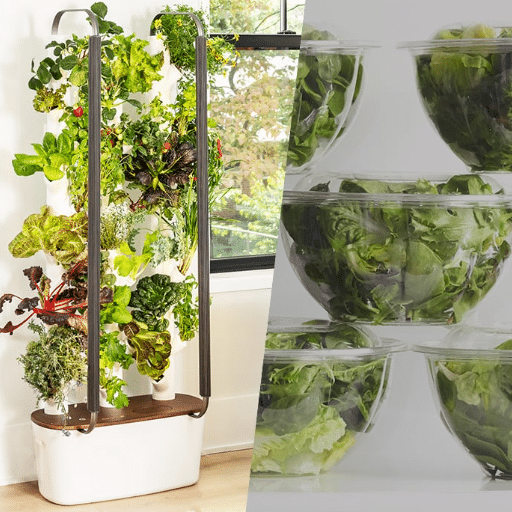
Growing your own vegetables at home has multiple advantages: it is nice to see the green plants indoors; it ensures a steady supply of fresh, nutritious produce year-round, and moreover, it is very convenient since the produce is just at your fingertips. Indoor vegetable gardening can change your apartment into a green oasis even if you live in a small place or want to grow plants throughout all seasons. This guide discusses the best vegetables to grow indoors with hints to make your indoor garden successful. What you will find here ranges from easy-to-grow greens up to compact vegetables that are perfect for pots. All the necessary information to get up and running and reaping the advantages of homegrown food all year long is waiting for you.

Indoor gardening refers to the growing of plants, which may include vegetables, herbs, and flowers, in indoor conditions like homes, flats, and offices. It offers a convenient way out for people who have either no or very little outdoor space and for those who live in areas with very cold or hot climates by facilitating year-round planting. The investment of time and resources in proper lighting, water, and nutrients can cause indoor plants to thrive even in very restricted spaces or with limited equipment. Commonly grown indoors are leafy greens, herbal plants such as basil and parsley, and little vegetables like tomatoes and peppers. This system of cultivation is the one that guarantees the daily supply of fresh produce and also the contribution of more life and greenery to the indoor atmosphere.
The list of the pros of growing vegetables indoors is long, and the number of urban dwellers without a garden or proper climate will definitely be a huge market segment this way and so on. It gives an unbroken supply of fresh, nutritious produce, no matter the circumstance of the weather outside or the seasonal restrictions that might be in place. Besides, more care is given to the plants since indoors the pests and diseases that occur outside are eliminated thus the healthier plants. Another argument in favor of the indoor garden is that it sustains the green lifestyle, since one will be less dependent on the supply of fresh products from the stores, there will be less packaging waste, and of course, the transportation-related emissions will also be reduced. The advantage of indoor plants in improving the quality of air and providing a conducive atmosphere for relaxation and a germination of different moods is also very significant to the health of the humans.
When deciding on the location of your indoor garden, it is important that you consider factors like natural light, temperature, and ease of access to the garden. Find a spot that gets plenty of sunlight or close to the south or east-facing windows. If you have natural light is limited, then go for fulfilment with the grow lights. Keep the area at the plant-friendly temperature so the seedlings and plants grow without much stress, and avoid places where there are drafts or places with very hot or cold spots. In addition, accessibility is of utmost importance; choose a location for your garden where you would not find it a hassle to water the plants and take care of them. An area that is open, airy, and well-kept will be perfect for your indoor garden to thrive.
When it comes to growing vegetables indoors, you will need to invest in certain essential items that will help you to create the ideal environment and keep it that way. A good start would be the containers which must have excellent drainage holes so that water does not get accumulated in the soil and causes root rot. Use potting soil rich in nutrients and specially prepared for indoor plants. A good watering jug or spray bottle is very important for continuous being in the right moisture condition. Lighting is very important, thus if a daylight is not enough, adopt grow lights. Furthermore, things like pruning scissors and a tiny trowel will facilitate performing pruning and managing soil. Lastly, you might want to have a hygrometer for monitoring the humidity level to keep it suitable for the vegetables you are growing. The more these tools are used, the more it becomes a less effort and time-consuming exercise to maintain an indoor vegetable garden.
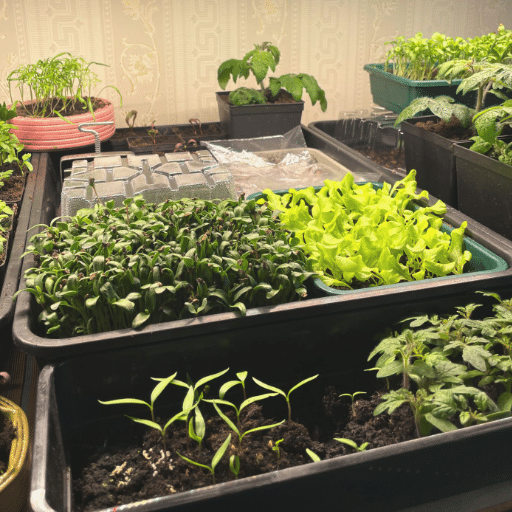
Vegetable cultivation in the house is a very good method of fresh produce consumption all through the year. The selected vegetables worth growing indoors according to their characteristics are:
Fruits and vegetables mentioned here are not very demanding and short on space, thus they contribute to the indoor gardening.
Indoor vegetable production might be the easiest and most productive way to have fresh food for a small area. The group of the easiest vegetables to grow indoors includes leafy greens, which are the likes of lettuce, spinach, and arugula, that do very well in shallow containers and need very little light. The same goes for root veggies such as carrots and radishes, as well as peppers and cherry tomatoes, all of them can be indoor plants given sufficient light or grow lights are arranged and the right container depth is provided. These vegetables require little care and take up small spaces, which also makes them good for beginner’s gardens or for urban growers that want to get the most out of their space and have fresh produce all year round.
Speaking of best salad greens for your indoor garden, the likes of lettuce, spinach, and arugula are the most preferred to grow in light of their high yield and adaptability. These greens do not ask for big containers, which means they perfectly fit into small spaces, and they are able to grow even in very low light, but if you provide them a little extra light they will surely respond with better growth. They are quick to grow and are very versatile in that you will be getting fresh, tasty, and crunchy leaves for your salads all year round with very little work to do.
Microgreens are the most amazing indoor gardening option with the highest nutrition and the least cultivation skill needed. These minuscule greens, which are harvested a few weeks post-germination, are full of vitamins, minerals, and antioxidants; thus, they are a superfood to be added to meals. Microgreens can be grown in very little space because they can be placed in small trays or containers on window sills or countertops. They do well when watered adequately and get enough light, manly ready for harvesting in 7-21 days based on the variety. With such varieties as sunflower shoots, radish greens, and broccoli sprouts, microgreens not only being simple but also quite low-risk to reward in regard to having fresh, home-grown produce.
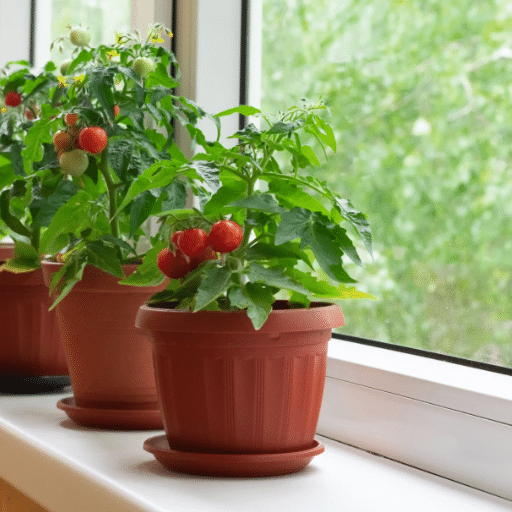
Adding herbs to your indoor vegetable garden enhances its versatility and flavor potential. Some of the best herbs to grow indoors include:
These herbs are low maintenance, require minimal space, and can be grown year-round, making them perfect companions for your indoor garden.
A hardy plant that an average person could have in his or her kitchen. Basil is a well-known easy-to-grow herb with surprising flavor and scent characteristics. The biofuel it derives from is also quite powerful. Besides, it keeps the pests away, thus acting as an organic pest-control plant. Basil is the king of herbs. It is always there in Italian dishes like sauces, salads, and even in drinks like cocktails, etc. Regular cutting of leaves, or harvesting, keeps the plant healthy, and you can always have fresh leaves for кулинарь. With its easy growth and widespread use, basil is an absolute star among herbs, bringing nothing but the best to any indoor garden.
To many, the term scallions may not sound familiar as much as the term green onions would. Nevertheless, they are still among the top 5 easiest vegetables as well as a great option for every novice home gardener. Scallions are the kind of stuff where not a problem exists, with every care needed in very much the opposite way. They are also one step away from being the most sustainable and cost-effective option of the kitchen scraps the kitchen has! Scallions are easy on space and by providing them with well-draining soil and regular watering you will get roots that are moist but not soggy. Regardless to say, they prepare the ground for fresh garnishing or adding in the cooking of that kind of cuisine which is not very pungent. It would be like, with little effort, a scallion will be there at just the reach of your fingers, giving you the fresh produce that you need constantly.
Basil is yet again a wonderful herb for indoor cultivation that will be mostly period on the brightest window with no less than 6 hours of light every day. It is also a plant that has the capability of soaking up all the water from the soil, hence strong drainage is a must. Just like, basil, parsley is also an indoor plant that is low-maintenance and quite accommodating to pots. Its moisture and light requirements are quite lenient as it prefers indirect sunlight and constant moisture. Mint, due to its fast growth and stimulating smell, is great for a windowsill, but care is still needed to prevent it from overpowering the other plants. Last but not least, thyme is regarded as a hardy herb that, while managing bright but indirect light environments, moderate watering is the only requirement. Your cooking will be with these herbs plus you will have also lovely greens and life in your house.
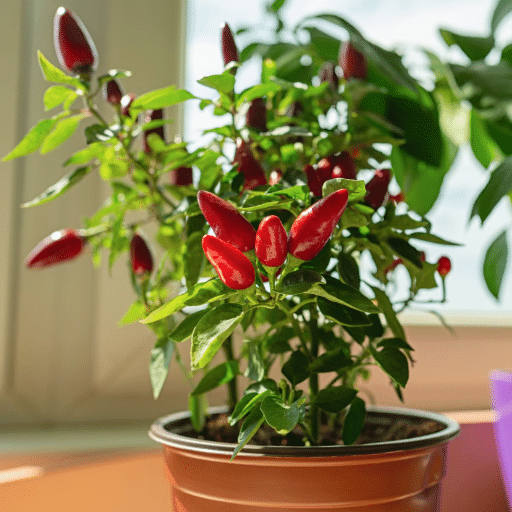
Carrots, lettuce, and radishes are all great choices for indoor vegetable gardening. Carrots prefer deep containers filled with loose, well-drained soil and require watering on a routine basis. Lettuce grows very fast and requires little space; it grows best in shallow containers requiring regular watering and medium sunlight. Radishes are among the fastest-growing vegetables, with a preference for small pots, and can cope well with bright but indirect sunlight. These vegetables require minimal maintenance and help beginners to produce fresh vegetables all year round.
Carrots can be a worthy buy for container gardening with the right inputs. To grow carrots properly, a deep container is chosen to fit in its long roots. The soil ought to be loose and well-draining with the absence of rocks or debris to give them a straight growth. Sow carrot seeds thinly and keep the soil moist at all times during germination. Put the container in a place where it will receive full sun for at least half a day. With due care, the carrots should be ready for harvesting in about 60 to 80 days, depending on the variety.
Another favorite of home gardeners combined with sweet enjoyment is the growing of peas, which must be rewarding and simple. For successful pea changes, select a broad container with sufficient drainage, and fill it with nutrient-rich, well-draining soil. Sow the peas about 1 inch deep and keep the seeds a couple of inches apart. The container must be kept in a sunny location so as to provide at least six to eight hours of sunlight to the plants. If this is not possible, use a grow light. The soil must also remain moderately moist but never too wet to avoid root rot. Trellises or supports should be provided so that pea vines can climb up smoothly with age. Most pea varieties are ready to harvest within 60 to 70 days, a fresh treat in your appetizing menu.
Spinach and kale get a lot of praise for their tremendous nutritional benefits and for carrying the full umbrella of culinary possibilities. They are considered rich in vitamins and minerals, including vitamins A, C, and K, along with iron, calcium, and fiber. These green foods are also standing tall with their antioxidant properties; antioxidant properties serve as a shield against inflammation and promote good health with varied methods. Spinach and kale would be fantastic fresh in salads, in smoothies, or cooked as a side dish, acting as a nutritional boost to any meal. While on Limelight, these greens never fail to energize, boost the immune system, and enhance bone health.
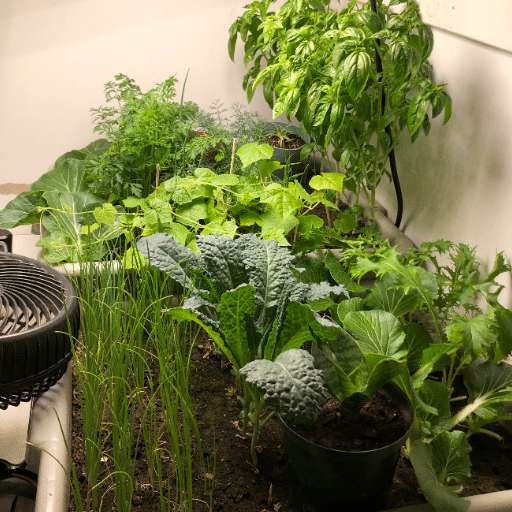
Address these challenges head-on and create an environment that nurtures your indoor plants into full bloom.
Vegetable gardening can absolutely take place indoors, and on the shady side no less, if proper measures are taken. Salad greens such as lettuce, spinach, and kale truly are the low-light organisms that proliferate rapidly. Herbs including parsley, mint, and cilantro likewise adapt well to loss of light and can become indoor plants. It is also worth considering grow lights onto natural light supply to grow sunlight in one form or another and into the required luminous power for photosynthesis. Along with good drainage of containers and regular watering exposure, these will give a chance for the plants to prosper even in the absence of sunlight.
Grow lights can prove to be a bonus for indoor gardening, especially when light is scarce. To leverage these grow lights optimally, maintain a distance of about 6-12 inches from the plants: this creates a good representation of natural sunlight without letting the heat build up. Choosing a good set of full-spectrum LEDs or fluorescent grow lights is of great importance, as the other wavelengths provide generally useless irradiance for photosynthesis and plant development. Meanwhile, 12-16 hours of illumination, depending on the biological requirement of light by a particular plant, ensure these lights are turned on, unfinished by a timer to assure complete working cycles. Adjusting the light’s position every so often during plant growth assists in providing a proper level of uniform illumination. The implementation of the aforementioned practices can truly benefit healthy plant growth and are more furthers with the usage of their grow lights in an indoor setting.
The correct humidity and temperature are essential for healthy indoor plant growth. Most plants prefer about 40-60% humidity. Hence, in drier climates, one can opt to put in a humidifier or use pebble trays with water to up moisture. Keep a hygrometer to check the humidity level regularly so as to maintain consistency. Usually, a temperature that lies between 65 and 75°F in the day with slight drops at night is favored by the majority of indoor plants. Avoid draughts and heating vents or air conditioning near plants as fluctuating temperatures stun them. The right mix is half the battle towards a nurturing environment.
Azure Farm Life: The Best Vegetables to Grow Indoors and How to Get Started – This source lists vegetables like herbs, carrots, peppers, salad greens, and more, along with tips for indoor gardening.
Family Handyman: Fruits and Vegetables You Can Grow Indoors Year Round – Offers a comprehensive list of vegetables and fruits suitable for indoor growth, such as tomatoes, lettuce, and radishes.
Bonnie Plants: 9 Tips for Indoor Vegetable Gardening – Provides practical tips and best plant choices for successful indoor vegetable gardening.
If one is interested in keeping the garden going indoors during winter, consider vegetables that grow well in lower light conditions, and at cooler temperature ranges. Leafy greens like kale and spinach are good choices, and they need at least 10 hours of light to be grown. Radishes are also perfect since they are fast-growing and can be harvested in as early as three weeks. Herb plants such as basil and scallions will also prosper indoors and provide an ample supply of fresh flavors to your kitchen. Provided you have the necessary equipment, including a grow light, these vegetables can remain a source of joy well through the winter months.
If you lack any natural light, then your home can still be another place to grow vegetables under artificial grow lights. These lights possess the technical spectrum of light needed for your plants to carry on photosynthesis efficiently. When growing without sunlight indoors, give your plants a good 10-12 hours light treatment per day. Seed starting mix that will promote excellent root growth could well be considered. Many vegetables and herbs can grow well under grow lights, so you can go about enjoying your fresh produce throughout the year, including microgreens and salad greens.
Most herbs are easy to grow and might not require much space; hence, they would be a very fitting addition to an indoor gardening program. Among the easiest herbs to grow indoors are basil, parsley, and mint, given their adaptability and ability to survive in tough conditions. They do require lots of sunlight and would do well if put on a windowsill or under grow lights. Give them a little more room to grow and loving care, and they will keep growing to give you fresh flavor for your meals. Even better, they can be started in small pots or containers to fit a petite indoor garden.
It depends on what kind of seeds you’re planting when it comes to how deeply you’d want to plant them. Once again, large seeds should be planted at about 2 inches deep, whereas smaller seeds are kept closer to the surface. Carrot seeds represent some of the easiest vegetables to plant thinly in well-prepared soil. Allow the seedling space to grow and keep the soil moist for best development. For best results, always follow any special instructions given on the seed packet.
An excellent way to grow veggies indoors, especially if you are limited on space, is through container planting. Easy veggies to grow inside include lettuce, radishes, and some herbs such as thyme and basil. These plants do well in small pots and are relatively easier to maintain when compared with bigger garden plants. Ensure that your containers have drainage holes and that you use good quality potting soil or seed starting mix. If taken care of well, these vegetables will continue to grow and provide a fresh supply of produce from your indoor garden.